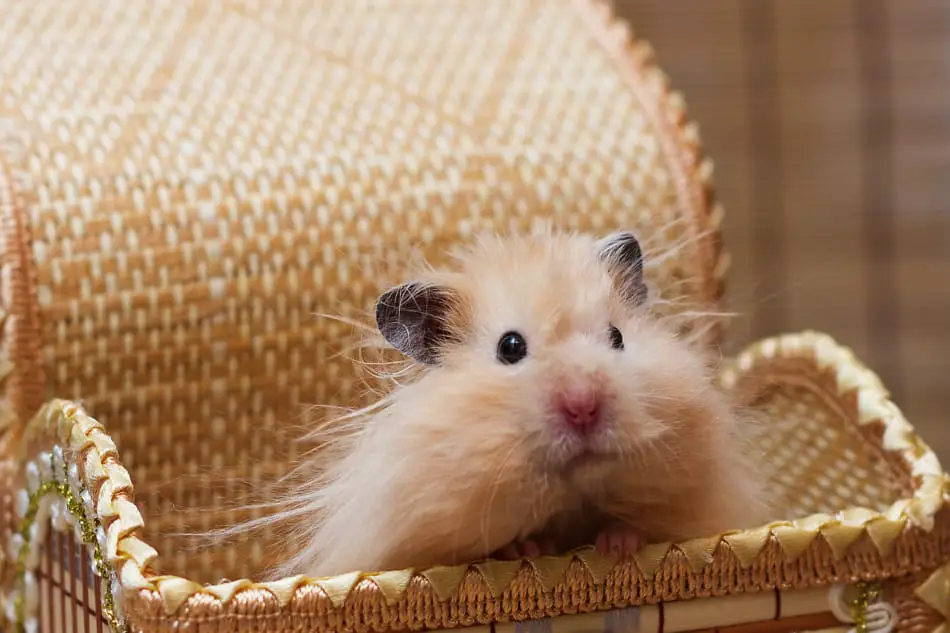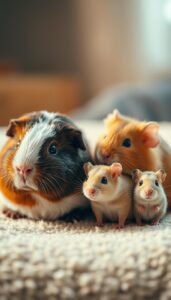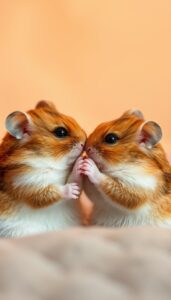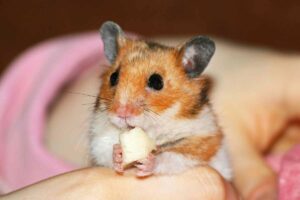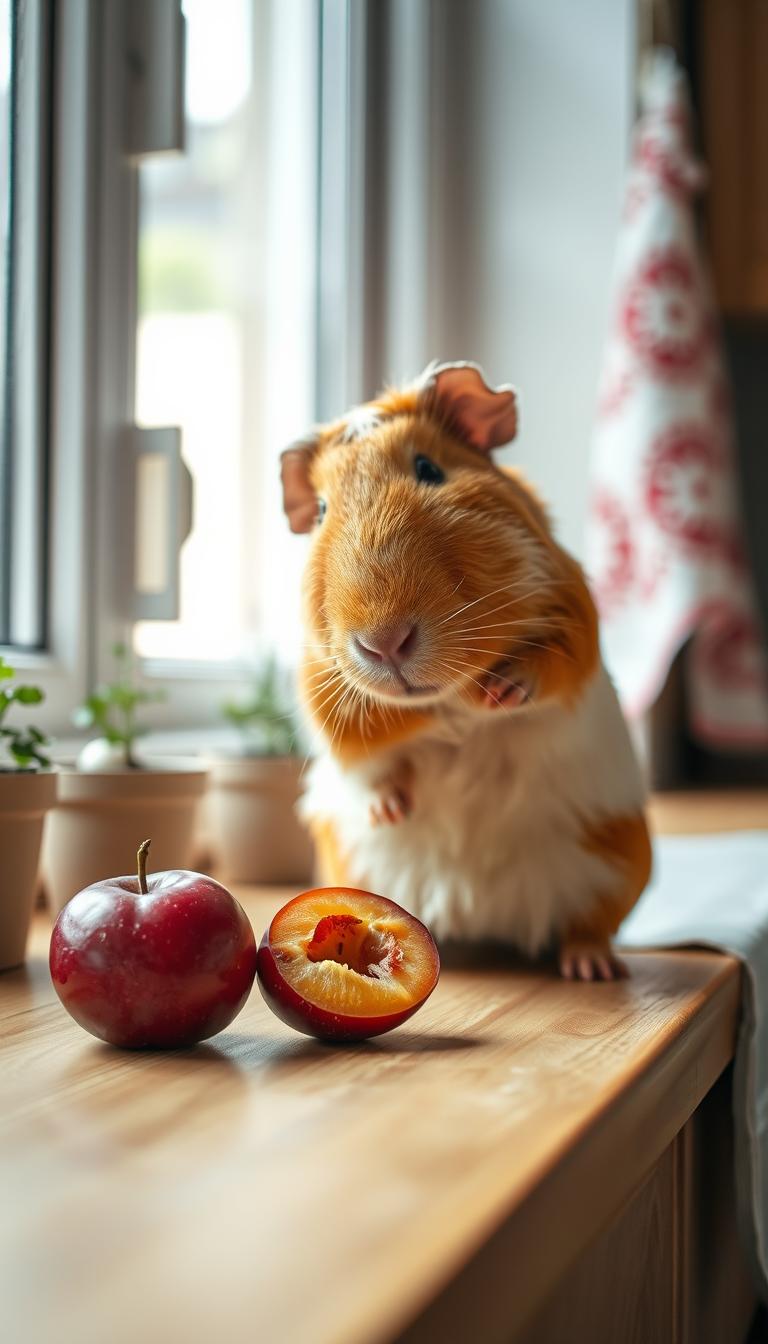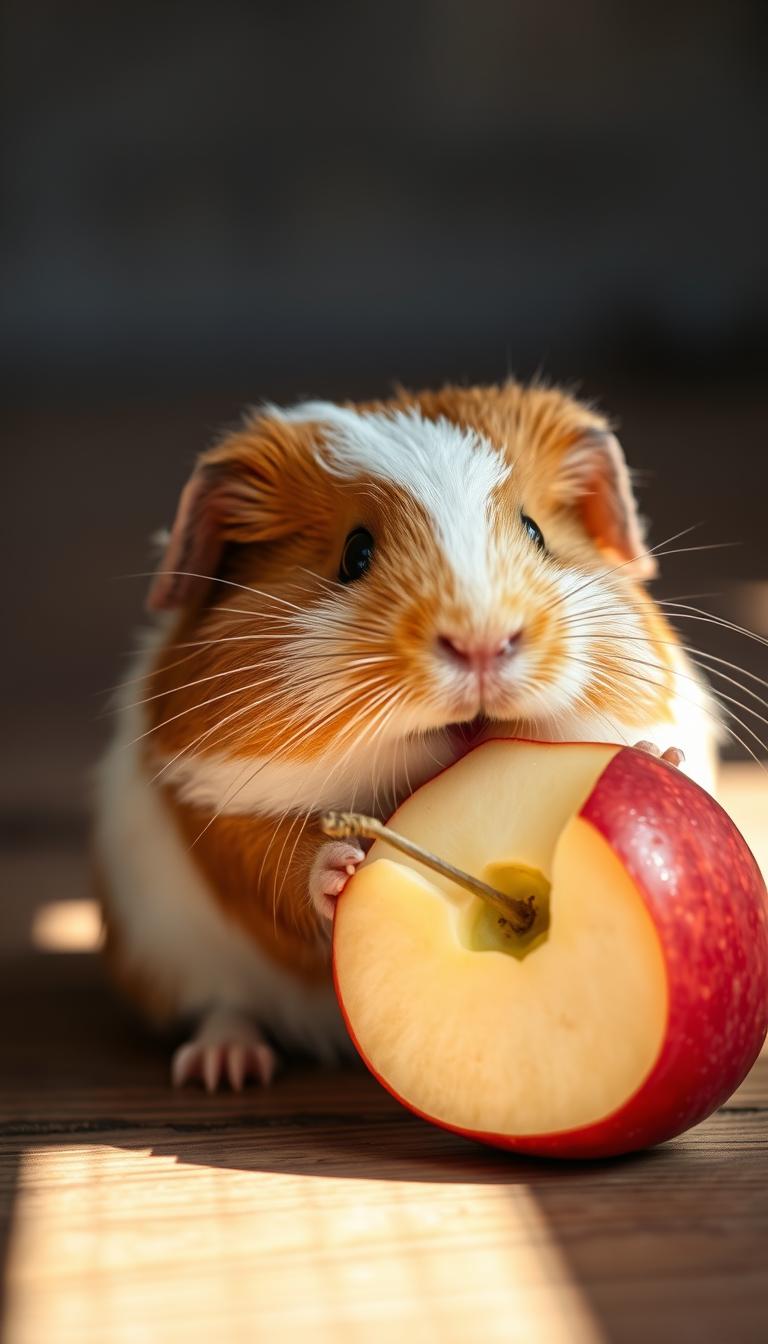Hamsters are some of the cutest animals out there, and they make lovely pets. Teddy Bear Hamsters are a long-haired, fluffy breed.
They are so-named for their distinctive teddy bear-like appearance. The Teddy Bear Hamster is happy to bond with their people. They are expressive, playful, and all-around delightful fellows.
They have lots of unique and charming traits that make them special.
Here are 21 fun Teddy Bear Hamster facts that you might not know!
Table of Contents
21. A Teddy Bear Hamster Eats Bugs
In the wild, hamsters can’t afford to be too choosy. They will eat whatever is safe and available. This includes not only leafy greens, veggies, and grains, but also live, wriggling grubs.
You may (or may not) have heard before that grubs, mealworms, maggots, and the like are an excellent source of protein. Some will feed their domesticated hamster mealworms, frozen or live.
20. Hamsters Like To Hide
Being prey critters, hamsters do like to hide. They live in little dens and like to have a similar set-up in their cage. Including little ‘hamster houses’ is a great way to help them feel safe and secure.
You can purchase these, or even make them out of old containers at home.
19. The Teddy Bear Hamster Is A Solitary Creature
Hamsters do not get along with their own kind, and will even turn on their siblings. Young must be separated at no later than 8 weeks, or territorial disputes will occur, which can turn deadly.
Luckily hamsters are much more willing to interact with their people. All that they should require are manners, space, affection, and time.
18. Teddy Bear Hamsters Can Have Certain Fruits
As a matter of fact, hamsters consider fruit a bit of a treat! Because fruit is high in sugar, it is necessary to limit how much hamsters have.
There are also certain fruits that are best for them, such as pears, apples, or even a little piece of peach. Teddy Bear Hamsters can indulge in fruit as much as two to three times a week. Fruit makes a nutritious hamster snack alternative.
17. Feed Your Teddy Bear Hamster Veggies
Like fruit, vegetables make a fine hamster snack. In fact, vegetables have more fiber and less sugar, comparatively. This means that hamsters can enjoy a good veggie snack fairly often: as much as 4 times a week.
Hamster snacks at the pet store are often high in sugar and low in nutritive value. Instead, vegetables make a healthy, fresh snack.
Some of the best veggies for your Teddy Bear Hamster are carrots, cabbage, cauliflower, and broccoli.
16. Domesticated Teddy Bear Hamsters Should Eat Pellets
Hamster food is typically available in the form of pellets or a mix. Most advisable is to feed a hamster pellets, mainly.
Otherwise, the little devils will eat only their favorite bits of a loose mix, and leave the rest behind -and of course, the leftovers tend to be the healthiest pieces. This can lead to nutritional deficiencies, obesity, and even diabetes.
So, a hamster may enjoy some mix every now and then, but for their primary diet, they should have pellets. We like Oxbow Pellets available from Amazon here.
Decent-quality pellets will offer the ideal nutrient blend, as well as measurement guidelines and the like.
15. Hamsters Are Quite Expressive!
As with any animal, you can learn to understand the Teddy Bear Hamster if you take the time. Small though they may be, a Teddy Bear Hamster is capable of feeling the whole emotional array: happiness, sadness, fear, joy, curiosity, anger, affection, and more.
Puffed cheek pouches indicate uncertainty and fear, for example. Stretching and grooming are signs of contentment and relaxation. Perked-forward ears show that the Teddy is attentive.
When a hamster blows air out of their cheek pouches all at once, it demonstrates deep insecurity and a desire to flee. Hamsters also squeak. Get to know your little buddy to learn how they express how they feel.
14. They Look Like Little Teddy Bears
Teddy Bear Hamsters have short, fluffy tails; stocky, round bodies, and ears with a tulip shape that is quite distinctive.
The entire body of the Teddy Bear hamster is coated in fur, which is very luxuriant and thick. Their eyes are dark, liquid, and expressive.
Some Teddies are more shaggy than others. Their truly adorable aesthetic look makes them highly sought-after among pet-lovers.
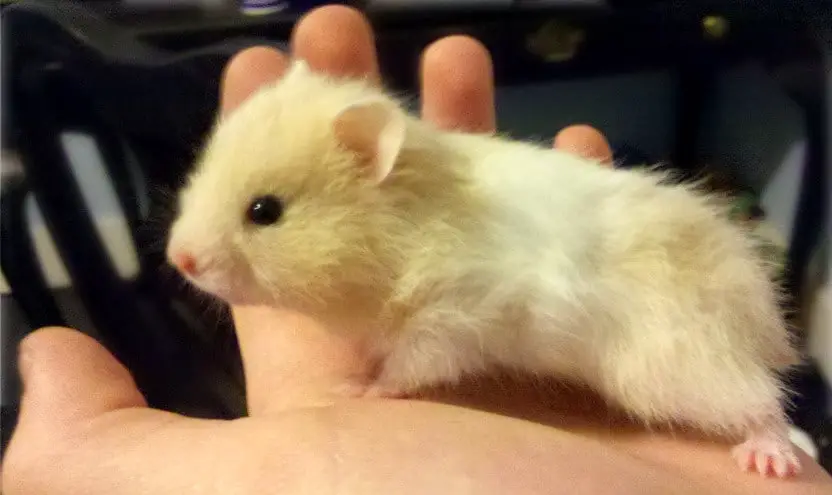
13. They Were First Discovered in Syria
Syrian locals considered the Teddy Bear Hamster a sort of a pest. A Teddy Bear Hamster is also called the Syrian Hamster, due to its place of origin. Hamsters originated in a few other areas, too, such as Greece.
In Syria, a physician discovered the den of a mother and her pups and took them back to a school in Jerusalem.
They were then used as laboratory animals until they were bred as pets. From there, hamsters made their way worldwide… and breeds such as the Teddy Bear Hamster came to be.
Did you know, Hamsters are illegal in certain parts of the world. Yes, It’s true. Click here to find out why!
12. Their Babies Are Known As Pups
These young are called pups; doubtless for their appearance, which is tiny and puppy-like.
11. They Like To Socialize With People
Hamsters of all sorts are, among their own kind, solitary. You would think this would make them antisocial. As a matter of fact, hamsters like to be around their people. Each day, they need a bit of attention and love.
You can bond with a Teddy Bear Hamster by taking them out to explore. Hamster-proof the area, and make a little obstacle course out of paper towel rolls, little boxes, etc.
Hamsters find this very stimulating, and good fun. Winning the simple creatures over with treats is also quite effective.
10. Some Foods Are Poisonous To A Teddy Bear Hamster
As mentioned above, Teddy Bear Hamsters can eat many types of fruit safely. Citrus is bad for them, however.
Oranges and the like are simply too acidic for their bellies, which are quite sensitive. Additional poisonous foods are avocados, apple seeds, mushrooms, grapes, onions, avocados, horse chestnuts, tomatoes, etc.
A rule of the thumb: don’t feed your hamster anything you have not first ascertained is safe.
9. A Teddy Bear Hamster Is Nocturnal
Did you know that Teddy Bear Hamsters are nocturnal? For this reason, it is recommended that you keep their cage somewhere that their nightly activities will not prevent you from sleep. Always include an exercise wheel, for them to use when you are asleep and they are awake.
8. Teddy Bear Hamsters Have Lots of Babies
Hamster babies, or ‘pups,’ come in litters of 8-12 on average, and even in litters of up to 20.
7. Teddy Bear Hamsters Must Have Exercise Wheels
You have probably seen a hamster running on a wheel before. Those little guys can go nowhere, fast! A hamster can get plenty of exercise with their own wheel.
This is important, as a Teddy Bear Hamster (like all hamsters) is quite energetic and active. Should you be on the lookout for a wheel for your hamster, find one with a solid surface.
This will prevent them from getting caught or slipping through. The wheel should also be chew-proof.
6. The Male Teddy Bear Hamster Has ‘Skirts’
Male and female Teddy Bear Hamsters alike are covered in fuzz and fluff. The males are even furrier than the females, with longer locks all over their bodies.
This fur grows especially long on their hindquarters, flaring out much like a skirt, which earned this fur the name.

5. Teddy Bear Hamsters Take Sand baths
Hamsters are very neat little fellows. In general, they keep their fur spic and span. They do this by grooming themselves – and by taking sand baths.
This is a habit unique to some animals, wherein they exfoliate filth from their fur with fine sand granules.
However, not just any sand will do. Hamsters have delicate noses, ears, and eyes, and they will need special, soft sand. These bathing sands are available at your local pet store. Just pour some in a suitable bowl, and your hamster is sure to make use of it quick.
4. They Can Carry Food In Their Cheeks
Perhaps you have seen chipmunks at the park, with their cheeks stuffed with food. This is an adorable habit that the Teddy Bear Hamster and hamsters of all kinds share.
After all, hamsters are very small. There is only so much they can eat at one time, and in the wild, food can be scarce.
Hamsters save extra food for later, to sustain them in wintertime. These resourceful little guys can carry up to half of their body weight in food, bedding, and the like.
3. Teddy Bear Hamsters Live An Average of 3-5 Years
Most hamsters can be expected to live between 3-5 years. A hamster can make it to as much as 7 years of age with exceptional genetics and care.
2. Teddy Bear Hamsters Need to Be Brushed at Least Once A Week.

Hamsters require little to no grooming on your part. They are pretty tidy little guys and will clean themselves. Teddy Bear Hamsters do their best, but this breed, in particular, requires a little help!
They have such long, voluminous fur, it can be hard for them to keep under control on their own.
Because of this, your Teddy Bear Hamster needs to be brushed at least once a week. Grooming your hamster is a great way to bond with them, as well as maintain their coat at its full softness and shine.
1. Teddy Bear Hamsters Must Not Get Wet Or Use Water To Bathe
Teddy Bear Hamsters should not get wet ever, really. Their chemistry is perfect for keeping themselves clean already.
The chemistry balance will only be thrown off by adding water or soap to the mix. You can. however, spot-clean with a damp rag, if needs be.
Conclusion: Teddy Bear Hamster Facts
So, Teddy Bear Hamsters: what’s not to love? Teddy Bear Hamsters look like baby teddy bears. They have many unique traits and quirks. They are tidy, soft, cute animals that you can interact with and watch explore.

